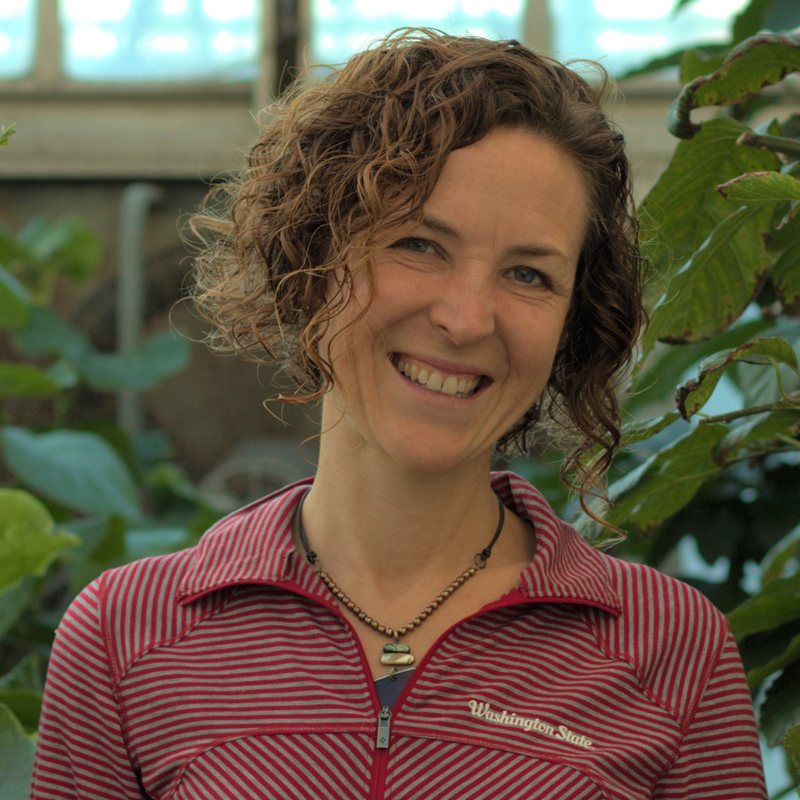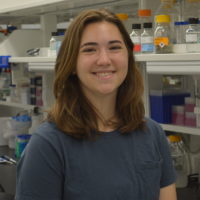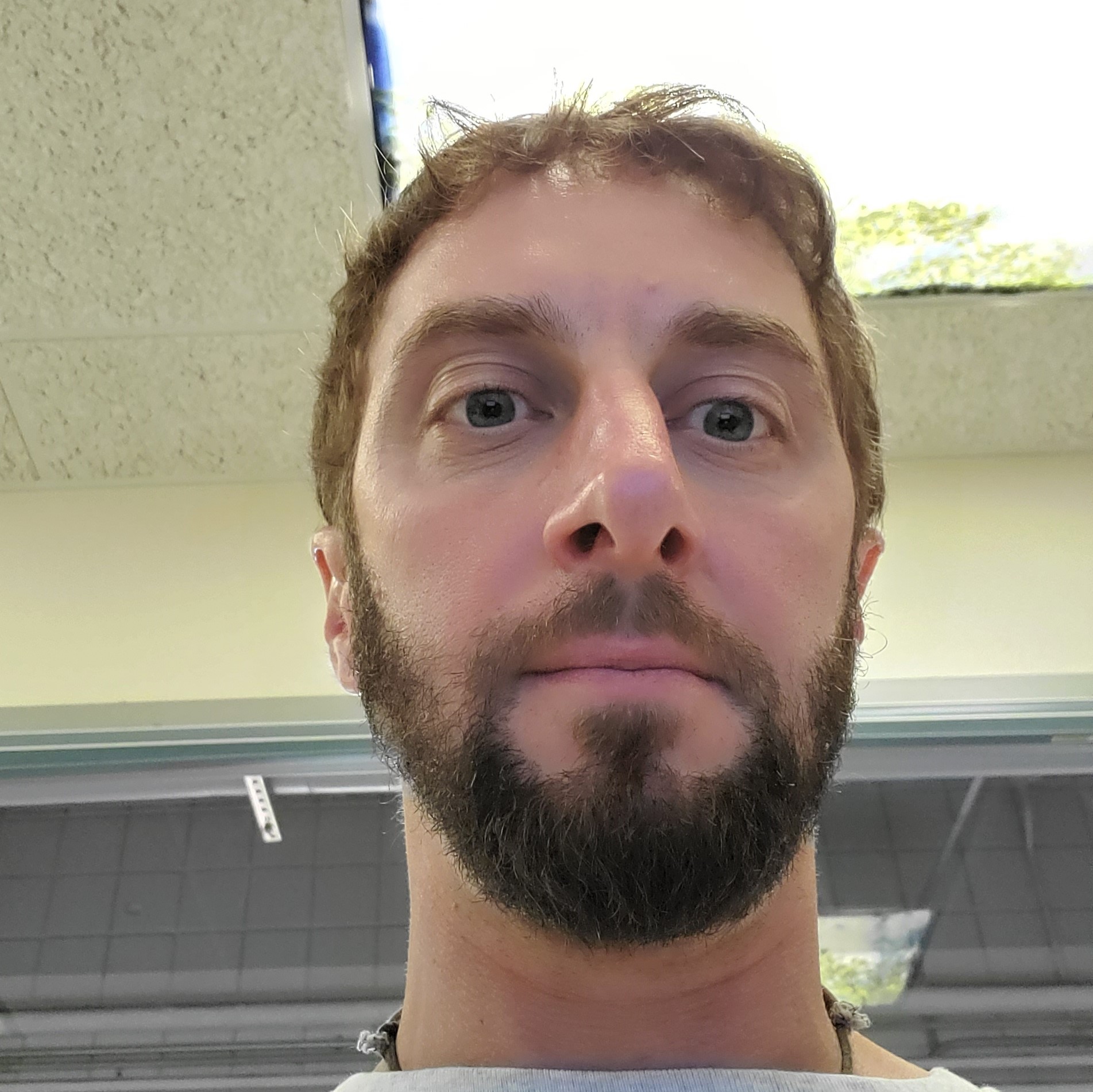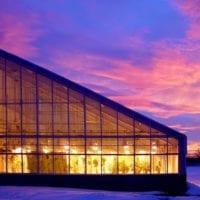Plant Growth Facility
Our Team
Boyce Thompson Institute’s (BTI’s) Plant Growth Facility encompasses approximately 25,000 sq. ft. of space within a private, not-for-profit research facility, located on the Cornell University campus in Ithaca, New York. This multifaceted facility, which services a wide array of research projects, consists of greenhouses, growth chambers, a dew room, a plant functional genomics room, a plant pathogen room, and a seed harvest room.
Specific Facility Components Include
- Greenhouses: A total of twenty greenhouses, 480 sq. ft. each, controlled and monitored by an ARGUS computer automated greenhouse control system designed specifically to control the highly dynamic climate variables in greenhouses. Six units are air-conditioned with chilled water and fourteen units use evaporative cooling.
- Conviron Growth Chambers: A total of thirty-eight chambers, including fifteen walk-in chambers totaling 3,700 sq. ft. and twenty-three reach-in chambers totaling 502 sq. ft.
- Dew Room: 72 sq. ft.
- Plant Functional Genomics Room: 600 sq. ft.
- Plant Pathogen Room: A 267 sq. ft. isolated room where plant pathogens may be used.
- Seed Harvest Room: Totaling 540 sq. ft. where plants can be finished, dried down, and harvested.
The Plant Growth Facility is managed based on the following principles:
- Goal: To use an Integrated Pest Management approach to achieve optimum plant growth and provide excellent
facilities and services in support of the research staff. - Vision: To operate a state-of-the-art plant growth facility, providing the highest-quality research plants.
- Focus: A proactive service-oriented approach that will anticipate the needs of the growth facility users.
The Plant Growth Facility operates in compliance with BTI, Cornell University, and State and Federal Regulations, including the Worker Protection Standard, Best Management Practices, all transgenic requirements, and pesticide regulations.
For more information, please be in touch with Brian Bell.
PGF Inventories
View bulb type and number of bulbs per space located in each of our greenhouses, growth chambers, dew room, and seed harvest room.
Greenhouse and Growth Chamber Lighting (PDF)
View length/width/area and monthly charges for each of our greenhouses, plant production rooms, plant growth rooms, growth chambers, and seed harvest room.
Greenhouse and Growth Chamber Space Inventory (PDF)
Space
Greenhouses
- Chargeable Unit: Center or side bench
- Total Area (sq. ft.): 5,451
Plant Production Rooms
- Chargeable Unit: Rack of 3 shelves
- Total Area (sq. ft.): 2,592
Plant Growth Rooms
- Chargeable Unit: Rack of 3 shelves
- Total Area (sq. ft.): 900
Chambers
- Chargeable Unit: Shelf
- Total Area (sq. ft.): 604
Seed Harvest Room
- Chargeable Unit: 3 or 4 shelves
- Total Area (sq. ft.): 360
How do I start a greenhouse or growth chamber project?
If you are interested in renting greenhouse or chamber space, please contact the Greenhouse Manager. Every effort will be made to provide the appropriate growth space.
What kinds of greenhouses and chambers are available, and what is the cost?
There are 14 evaporative cooled and 6 air conditioned greenhouses as well as many different sizes of growth chambers. To see sq. footage and space fee details you can look at the Greenhouse and Growth Chamber Space Inventory. To see lighting information in greenhouses and chambers look at the Greenhouse and Chamber Lighting Inventory. You will need to fill out an Internal Services Form to document your account number for billing purposes.
What supplies are in stock for growth facility users?
The greenhouse staff will provide an inventory of commonly used pots and trays. After use, the dirty pots will be disinfected and washed at no extra charge to the user.
Pots, trays, cones, etc. which are not part of the inventory and which are purchased by the projects, may be washed at no charge if these items are added to the inventory at the end of the project. If not added to the pot inventory, an hourly pot-washing fee may apply.
See Plant Growth Facility Supplies for a more detailed description of available inventory.
What services are provided by the greenhouse staff and what are the user responsibilities?
All plant material receives plant care unless the growth facility user requests otherwise. The fee for plant care will be charged even if the user declines some components. The greenhouse staff may provide additional services at an hourly rate of $30.00/hr.
- Watering 365 days/year
- Pest and disease scouting
- Cultural, biological, or chemical pest control measures in consultation with facility users
- Environmental control
- Photoperiod control
- Graphing of temperatures upon request
- Greenhouse or growth chamber maintenance
- Routine greenhouse or growth chamber sanitation
- Plant material autoclaving (material must be properly harvested, bagged and taken to the autoclave area by the user). Labs that have pathogen or pest infected plants should make other arrangements for autoclaving their plant material to prevent the spread of the pathogen or pest.
- Routine application of fertilizer in accordance with user request
- Routine washing of inventoried pots and trays. If labs have ownership of pots or trays to be washed, they can use the greenhouse pot washing area if available. If the greenhouse staff is asked to wash the pots or trays a $30.00/ hr. charge is applied.
Growth facility users must share the responsibility for quality plant care with the greenhouse staff. Open communication regarding the monitoring and maintenance of plant demands will facilitate optimum plant development, reduce problems and promote productive relationships between users and staff.
User responsibilities include:
- Keeping growth areas clean. Supplies should not be stored in the greenhouse or growth chambers. Lockers may be provided to the projects for supply storage.
- Removing unwanted plants from growth areas immediately after finishing with them.
-
-
- Non-transgenic plants must be put in a covered container and taken directly to the outside, green compost bin, provided there are NO transgenic plants in the growth area.
-
-
-
- Transgenic plants must be bagged inside the growth room and taken directly to the autoclave area. Remember, if even one plant in the growth space is transgenic, all plants in the growth room must be considered transgenic and must be autoclaved.
-
- Communicating plant care issues (insects and diseases, watering, fertility, etc.).
- Keeping growth and work areas sanitary and orderly.
- Using proper pot size and pot filling technique to reduce watering demands.
- Keeping plants staked, tied, pruned and properly spaced at all times. Proper spacing will ensure air movement as well as provide access for watering and pest control measures.
- Placing pots only on bench space, not on floors or windowsills.
- Removing any plant parts such as fruit, flowers, and plant parts or clippings from benches and floors and disposing of properly.
- Removing all the soil in the dirty pots and flats before returning them to be washed.
- Washing pots or trays that are not part of the growth facility inventory. The greenhouse staff may wash them for an hourly service charge.
All plants should be germinated from seed in the BTI growth facility or come from our tissue culture department. If plants must be moved to the BTI growth rooms from outside BTI, prior arrangements must be made with the Greenhouse Manager for plants to be inspected for pests or disease. These plants may be required to be quarantined resulting in a space charge.
What are the requirements for growing Arabidopsis?
What is the procedure for using plant pathogens at Boyce Thompson Institute?
Fill out the Pathogen Use Form. Read the Pathogen containment facility SOP for room 216.
What are the requirements for growing genetically modified plants?
All research involving transgenic plants must be registered with the Institutional Biosafety Committee (IBC). For more information, visit:
http://www.osp.cornell.edu/Compliance/IBC.html
Certain plants must be autoclaved before disposal, including those that are:
- transgenic
- virus-infected
- legally quarantined
- otherwise biologically hazardous
- otherwise required to be autoclaved by research protocols
- all other plants in the same growth room as above listed plants
Project personnel are responsible for:
- picking up an autoclave bag from the autoclave area in the head house
- bagging all plant material, fruit and plant parts in the greenhouse or growth chamber
- working with the greenhouse staff to ensure the material is autoclaved
- making sure there is no plastic in the autoclave bags
Autoclaving will be done by the greenhouse staff.
Certain plants must be autoclaved before disposal, including those that are:
- Transgenic
- Virus-infected
- Legally quarantined
- Otherwise biologically hazardous
- Otherwise required to be autoclaved by research protocols
- All other plants in the same growth room as previously listed plants
Project personnel are responsible for:
- Picking up an autoclave bag from the autoclave area in the head house
- Bagging all plant material, fruit, and plant parts in the greenhouse or growth chamber
- Working with the greenhouse staff to ensure the material is autoclaved
- Making sure there is no plastic in the autoclave bags
- Autoclaving will be done by the greenhouse staff.
PGF Forms
Greenhouse and Growth Chamber Lighting
This describes the greenhouse or chamber number and lists the type and number of bulbs in each space.
Greenhouse and Growth Chamber Space Inventory
This describes the greenhouse or chamber number and shows the amount of rentable space and monthly space charges.
Greenhouse Department Job Request Form
Complete this form to request any services not included in basic rental fees.
Greenhouse Environmental Control Request and Cultural Information Form
Complete this form before starting a new experiment in a greenhouse. Use this form to update your information at the start of each year.
Growth Chamber Request
Complete this form before starting a new experiment in a growth chamber. Use this form to update your information at the start of each year.
Insect Use Form
Complete this form to request space where insects will be contained.
Pathogen Use Form
Complete this form to request space where pathogens will be contained.
Plant Growth Facilities Supplies
This is a complete list of the supplies stocked by the greenhouse staff.
Planting/Transplanting Request Form
Complete this form if you would like the greenhouse staff to do any plantings or transplanting.
Watering Schedule Form
Complete this form to request watering in any space not normally watered by the greenhouse staff.
WPS Requirement to Provide Basic Pesticide Safety Information to Untrained Workers
Before working in any area where pesticides have been used in the last thirty days, you must read and complete this form and return it to the Greenhouse Manager.
PGF Use Policies
Download the entire policy or individual sections (PDF).
- Introduction and Mission Statement (PDF)
- Contact Information (PDF)
- Growth Facility Space Requests (PDF)
- Services Provided by Greenhouse Personnel (PDF)
- Supplies Provided (PDF)
- Growth Facility User Responsibilities (PDF)
- Communication (PDF)
- Plants (PDF)
- Housekeeping (PDF)
- Best Management Practices at BTI and Cornell (PDF)
- General Safety (PDF)
- The Worker Protection Standard (PDF)
- Biohazardous and Transgenic Plant Materials (PDF)
- Pathogen and Insect Use Policy (PDF)
PGF Other Resources
- Best Management Practices for Cornell Greenhouses (Ithaca)
- BTI Plant Growth Facilities Committee
- BTI Safety Committee
- CALS Spill Cleanup Guidelines
- Cornell Institutional Biosafety Committee
- NIH Office of Biotechnology Activities
- Environmental Health and Safety
- Environmental Health and Safety emergency phone numbers
- EPA Worker Protection Standard
- Occupational and Environmental Health, College of Agriculture and Life Sciences
- OSHA Hazard Communication Standard
For more information or to schedule a tour, contact Brian Bell.





